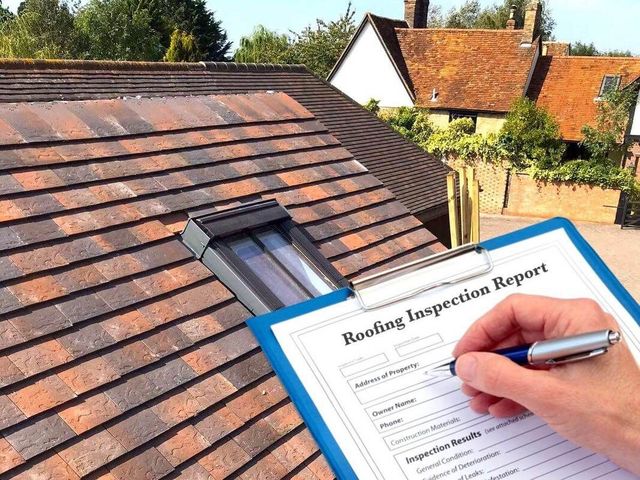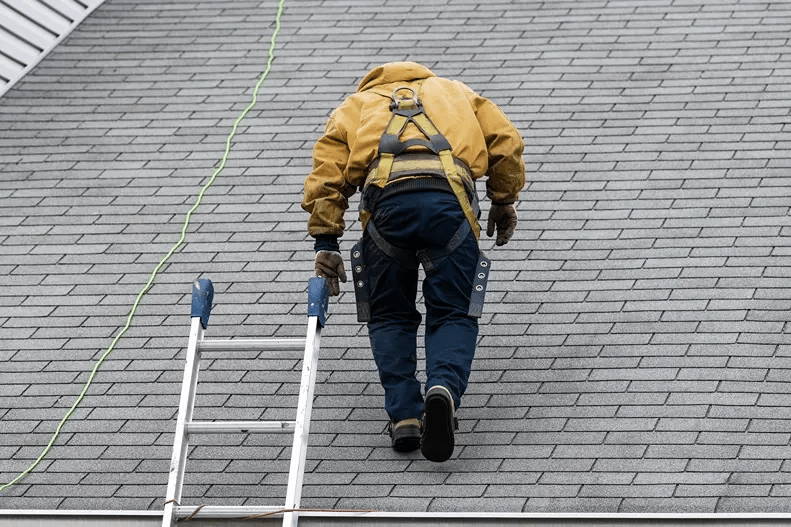What to Expect from a Hail Damage Roof Inspection After a Hailstorm
The Vital Guide to Roofing Examination: Guarding Your Home Versus Typical Damages
Routine roof covering evaluations are a critical component of home maintenance that can protect against minor concerns from escalating into considerable issues. Hail Damage Roof Inspection. Home owners frequently ignore the indicators of wear, such as missing out on shingles or subtle leaks, which can compromise the stability of the entire framework. Understanding the relevance of these analyses not just aids in protecting your roofing's lifespan however likewise improves power performance and total security. As we explore the typical indicators of roof damages and effective upkeep methods, it becomes apparent that an aggressive method is necessary for safeguarding your investment. What particular facets should you concentrate on throughout your next evaluation?
Relevance of Normal Roof Covering Examinations
Regular roof assessments are crucial for preserving the stability of a structure's framework. These evaluations act as a proactive measure to recognize possible problems prior to they escalate into expensive fixings or significant damage. By performing regular evaluations, homeowner can make sure that their roof coverings remain in optimal condition, consequently lengthening their lifespan.
During these evaluations, different aspects are analyzed, consisting of the problem of shingles, flashing, and drainage systems. Additionally, the presence of moss, algae, or debris can be spotted, enabling for timely remediation. Dealing with minor issues beforehand can prevent a lot more considerable issues, such as leakages or structural degeneration, which may endanger the security of the structure.
In addition, normal roofing system assessments add to energy effectiveness. A well-kept roofing system minimizes heat loss throughout chillier months and decreases the strain on heating and cooling down systems. This, consequently, can result in lower energy expenses and a decreased carbon footprint.
Usual Indications of Roofing System Damage
Recognizing common indicators of roof damages is essential for house owners to maintain the security and long life of their home. These problems can compromise the roofing's integrity, leading to leaks and additional deterioration.
One more important sign is water spots on ceilings or wall surfaces inside the home, which often suggest leakages stemming from the roof. Property owners must additionally inspect for mold or mold development, as these can grow in damp conditions triggered by roof covering leaks.
Flashing around vents and chimneys must be examined for corrosion or damages, as faulty flashing can allow water to permeate the roofing framework. Sagging areas on the roof surface may suggest structural issues, requiring immediate attention. By acknowledging these indications early, property owners can take positive steps to deal with roofing system damage, ultimately safeguarding their home from costly repairs and ensuring a sturdy roof covering system.
Seasonal Roof Covering Upkeep Tips
Acknowledging the signs of roof damages is simply the primary step in guaranteeing the longevity of your roof; recurring upkeep is just as vital. Seasonal roof covering maintenance is important to not only expand the life of your roof covering however also to prevent pricey repair services down the line.
During springtime, check your roof for any kind of indications of winter damages, such as broken shingles or displaced blinking. Clean seamless gutters and downspouts to guarantee correct drain. In summer, look for moss or algae growth, and think about applying a protective sealer to stop moisture build-up.
As autumn techniques, remove fallen leaves and particles from your roofing and gutters. This will help lessen the risk of water pooling and possible leaks. It's likewise a good time to take a look at the roof official website covering for any type of indicators of wear, such as loose roof shingles or rusted blinking.
Do It Yourself Roofing Examination List
A comprehensive DIY roofing system assessment list is necessary for home owners aiming to maintain the integrity of their roofing system. Begin by examining the roof surface for any noticeable indicators of damages, such as missing out on, split, or crinkling roof shingles - Roof Inspection Company. Pay attention to locations around skylights, smokeshafts, and vents, as these prevail leak factors

Moving to the inside, examine the attic room for signs of water invasion, such as discolorations or mold growth. Make certain appropriate air flow to avoid wetness buildup, which can cause wear and tear.
## When to Work With an Expert
While lots of homeowners can conduct fundamental roof covering inspections, specific conditions warrant the know-how of a professional. If you find significant damage, such as big missing out on tiles, noticeable sagging, or water spots on the ceiling, it is vital to consult a qualified roofer. These problems might show underlying architectural troubles that require immediate attention.
Additionally, if your roofing system is nearing the end of its expected lifespan-- generally 20 to 25 years for asphalt roof shingles-- it is a good idea to have an expert examination. Experienced examiners can assess the roof covering's condition and give informed referrals on repair work or replacement.
Severe weather occasions, such as hailstorms or hefty winds, likewise necessitate professional analysis. If left unattended, also small damage can lead to substantial difficulties. If you're thinking about marketing a residential property or purchasing, a specialist evaluation can reveal potential concerns that might affect the purchase.
Conclusion
Normal roofing assessments are essential for keeping the honesty of property frameworks. Prioritizing roofing system evaluations eventually resource contributes to a safe and secure living setting.

During spring, check your roof covering for any indications of winter months damages, such as broken roof shingles or displaced blinking. Begin by checking out the roofing system surface for any type of noticeable indicators of damage, such as missing, split, or crinkling roof shingles.